Growing and caring for garden chamomile in the open field
Many plants can "decorate" the courtyard of a private house. The perennial garden chamomile is a real fairy who can transform a boring place. Planting and caring for a plant outdoors is pretty simple, and large white flower heads will create a good mood. In everyday life, these beautiful tall flowers are called chamomiles because of the color similarity to field chamomile - white petals and a yellow center.
The specific name of the decorative culture is nivyanik, or popovnik. The plant in stores is sometimes called "leucanthemum", sounding the Latin name for the species: Leucanthemum vulgare.
Description
Nivyanik, or perennial garden chamomile, belongs to Astrov, grows up to 15-80 cm. The root is short, with small branches. Stem slightly faceted, straight, surrounded at the bottom by a rosette of oblong toothed leaves. Oblong stem leaves along the edges are also serrated, bright green. Inflorescences are baskets with yellow central tubular flowers and white false-lingual marginal flowers. Baskets of varietal plants reach from 6 to 12 cm in diameter, the color of the marginal flowers also varies - from white to yellow. Fruits are small achenes.
All varieties of garden chamomile are cut for a very long time, up to 7-10 days.
Types and varieties
The wild cornflower grows almost everywhere, it has up to twenty species. It has been cultivated for a long time, and numerous varieties are spread in the gardens, differing in the shape of the petals, the shade and structure of the basket.
- Christine Hagemann
Variety Christine Hageman bred from the largest daisy, grows up to 1 m. Baskets are large, 8-10 cm in diameter, in color - a classic chamomile combination: white with a yellow center. Blooms from July to mid-August.
- Autumn chamomile
The species is also called late daisy. This impressive flower up to 1.5-2 m in height is a rare guest in our gardens. The bush is firm, with a crown of lush, large snow-white flowers up to 8-10 cm in diameter. Blooms in August.
- Alaska
A variety of long-flowering garden chamomile. The plant is up to 70-80 cm high, the diameter of the inflorescence is 10-12 cm. It blooms in June-July. The marginal petals are beautifully curved.
- Russian beauty
Perennial chamomile grows up to 70 cm, inflorescences are large, semi-double, up to 10 cm. White petals are dissected at the ends.
- Fiona coghill
The amazing variety Fiona Coghill is distinguished by densely double pompom inflorescences 7-8 cm in diameter with a yellow center barely noticeable behind the cap of the petals. The height of a strong stem of garden chamomile is 70 cm. It blooms in July and August.
- Maxima kenig
Chamomile is high, from 70 cm to 1 m, with strong peduncles. Baskets 1–2 rows, 10–12 cm in diameter. It dissolves in June-July.
- Paladin
Variety Paladin up to 50-60 cm high. Inflorescences are original, 3-4-row, lush, with a large center. The petals are of the usual form for the daisy.
- Aglaia
Aglaya garden chamomile rises to 60-70 cm. The flowers of this variety have interesting double inflorescences 10 cm in diameter with dissected narrow petals. Pleases with long flowering - from June to the end of August.
- Crazy daisy
Quirky, randomly twisted wide petals of perennial daisy Crazy Daisy with a yellow center create inflorescences 8-10 cm in diameter. The bush grows up to 70 cm, blooms in the second half of summer. The same swirling, but narrow petals are boasted of chamomile varieties of the Ostrich Pen, Yarmarka and others.
- Little princess
Perennial daisies of a low-growing variety Little Princess are grown for borders or bordering flower beds. A plant 20 cm high blooms in July, August, baskets reach 5-6 cm in diameter. Many peduncles grow from the root.The same inflorescences in another low variety Snegurka - up to 30-35 cm tall.
Some graceful varieties - Edelweiss, Wirral Supreme, Victorian Secret, Rings - stand out with short and inwardly curled edge petals that are closer to the center. They form a kind of snow-white crown around the yellow center.
In varieties of garden chamomile Lemon Curly, Gold Finch, Real Dream, Goldrausch, Broadway Lights, the edge petals are colored yellow.
Large baskets will be on chamomile bushes, which are transplanted annually.
Reproduction
Garden daisies are propagated by growing from seeds and dividing the bushes.
Seeds
There are two methods of sowing: podzimny (in the open field) and spring (seedlings). Not all varieties are sown before winter.
It should be noted that terry and varietal nivyaniki will not repeat the signs of a mother plant when grown from seeds.
Reproduction by spring seedlings is considered more reliable.
- In March, a light and loose substrate of sand and peat is laid out in pots and 2-3 chamomile achenes are placed at a depth of 0.5 cm.
- The containers, covered with foil, are placed near the window until germination, regularly moistening the soil.
- Seedlings are shown in 10-15 days.
The bright sun's rays interfere with germination of chamomile seeds. Containers with crops should not be placed on the windowsill.
Nivyanik seedlings are carefully looked after.
- Seedlings need to be illuminated for at least 14 hours. For this, special phytolamps or fluorescent lamps are used.
- Watered with moderately settled warm water.
- If all the achenes have sprung up, the less developed plant is removed by pinching or cutting off the stalk. You cannot pull out a seedling so as not to damage another.
- Plants are planted in open ground in May-June, in warm ground.
The seedling is pinched over the 3-4th leaf, so that in the future a bush with several shoots will form.
By division
In the third or fourth year of growth, chamomile bushes must be divided and transplanted to rejuvenate the plant. Over time, the bushes thicken, and the shoots from the planting center die off.
The transplant in the spring is painfully tolerated by the plant. The bushes are transplanted in September or October, choosing cool, cloudy weather. Fertile soil is poured into the place of the dug out cut.
Care
Perennial garden chamomile is quite unpretentious. But you need to choose the right site for the plant - sunny, without a close occurrence of groundwater and with neutral soil. On acidic soils, alkalinization is carried out, adding 1 sq. m 300 g of lime or dolomite flour. Before planting, the soil is mixed with humus (a bucket for 1 sq. M), add to the holes fertilizers for flowers... Plants are planted at a distance of 20-40 cm, depending on the vigor of the bushes. After watering, the soil is mulched to retain moisture.
In the care of garden chamomile, in addition to regular watering, loosening the earth and removing weeds, include periodic feeding.
- Florists recommend dry feeding with ammonium nitrate in the spring - without subsequent watering, scattering fertilizer between the bushes (1 tablespoon per square meter).
- If the leaves do not please with rich greens, chamomile is supported with urea in the bud phase: 1-2 tablespoons per 10 liters of water.
- In the spring, a solution of nitrophoska is also used: 35-40 g per bucket of water.
- At the beginning of flowering, they are fed with a solution of potassium sulfate and superphosphate: 20 g per 10 liters.
Flowers will delight for a long time if you remove wilted baskets. Before winter, the stems are cut, the plants are covered with fallen leaves or other mulch.
Diseases and pests
Garden chamomile can be affected by fungal diseases.
- With fusarium, roots rot, stems and leaves turn yellow.
- A whitish bloom that turns brown over time is a sign of powdery mildew.
- Reddish spots on the top of the leaves appear with rust.
- Dead tissue of leaves, covered with gray fluff, occurs with gray rot.
Diseased plants are removed, and all plantings are treated with fungicides (“Oxyhom”, “Topaz”, “Fundazol” are suitable).
The fresh greens of perennial daisies are attacked by thrips and aphids.If colonies of pests are noticed, they are treated with insectoacaricides: "Aktellik", "Agravertin", "Karbofos".
The choice of designers
The unsurpassedly beautiful garden chamomile easily forms gorgeous combinations with other flowers.
- The snow-white luxurious bouquets of nivyanik look harmoniously with bright poppies, bells, cornflowers, lavender, phlox, daylilies, carnations, Gaillardia, coreopsis.
- Chamomiles create sophisticated compositions with pinnate miscanthus, other tall ornamental grasses.
- Nivyaniki are planted on curbs, Mauritanian lawns, in the corners that recreate the Russian rural landscape.
Unpretentious plants will decorate a sunny area of the garden. Rest near a curtain of cheerful flowers will be complete, and they require so much worries.
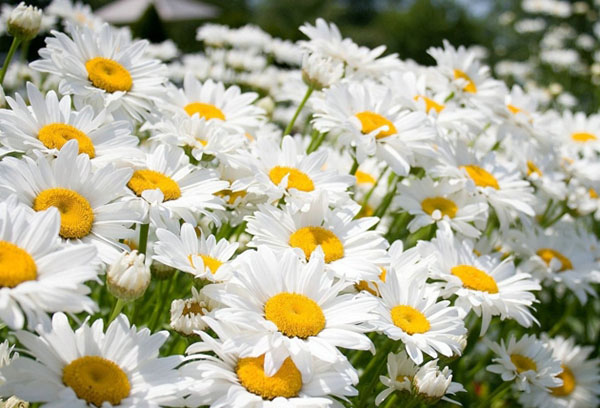
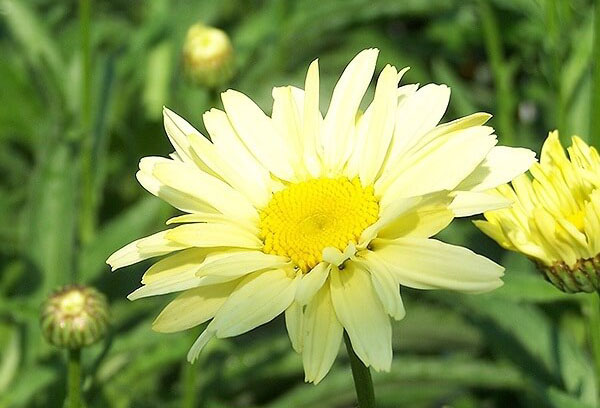
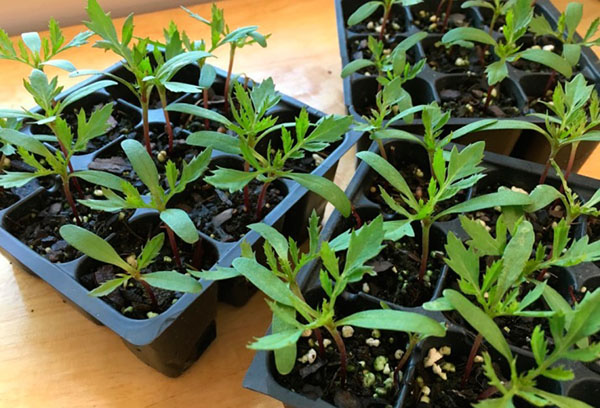

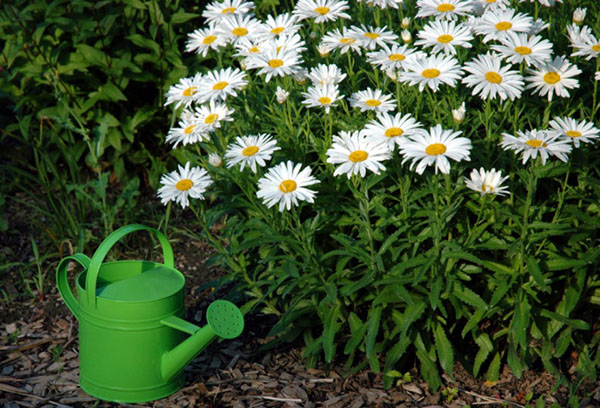
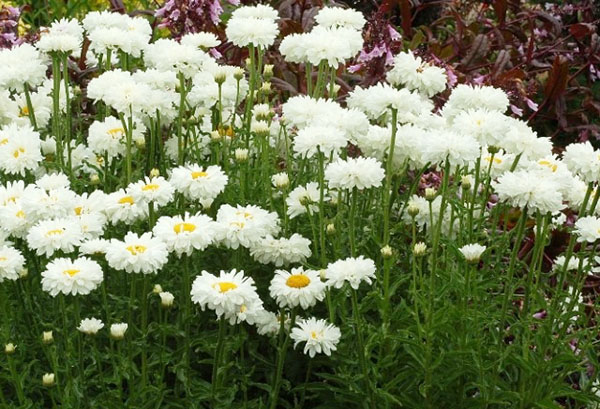
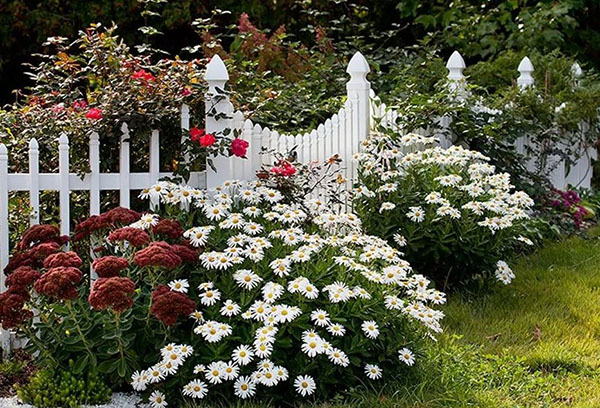
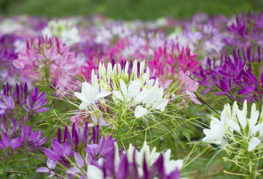
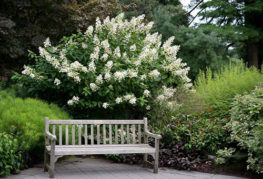

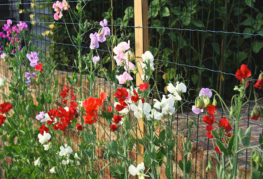
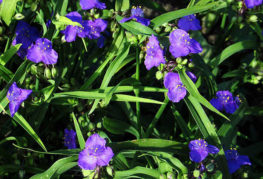
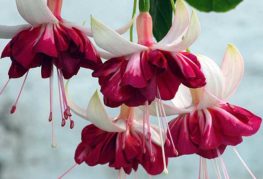
and will be published shortly.